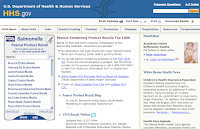
Transparency in government is like mom and apple-pie. Who doesn't think it's good?
In the summer of 1974, when I was a really little girl, I watched the Watergate hearings. The seeds of my move to D.C., were planted by the incredible Barbara Jordan (D-TX). I was transfixed by the unraveling of the first "Gate" scandal. And was grateful for the efforts of the Committee, the Congress and especially the witnesses to make our government more transparent.
Dan Munz, in
his blog post on transparency, correctly identifies transparency as a "procedural virtue." Transparency, in and of itself, doesn't make government any better.
So, how does more and more data showered on the American public make good policy? Dan suggests that making reams of data available allows those so inclined to customize information. This customization could make the info relevant to the actual lives of people, therefore improving public engagement.
I think that there is something to this. People want to know how the ga-zillions of recovery dollars are going to help their personal recoveries--whether in their own pocketbooks or within their towns, counties, states or industries. Numbers as high as a ga-zillion are too big for people to grasp. The data could be mashed up and localized to help people understand what government is doing and to provide context so citizens can meaningfully advocate on decisions that affect them directly.
Ultimately, the questions that people care about are ones like, Can I keep my house? What happens if I lose my job and health insurance? How do I get on the project to build the new bridge? The questions are very personal. The data is very general. Can the data be brought to a level that will make sense for individuals?
Dan's other reason for transparency is accountability. He is right again when he says that accountability is only meaningful when "government is willing to listen to what people say once they have the facts." Here again, the showers of data have no value unless they are shaped in a way that make them meaningful.
The goal of transparency is not transparency. Transparency efforts need to be measured by their effectiveness in facilitating accountability and citizen engagement.
Read Dan Munz's post "Where's The Data."










